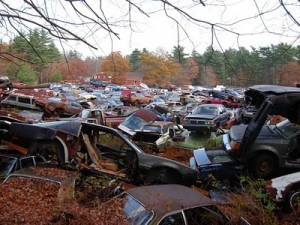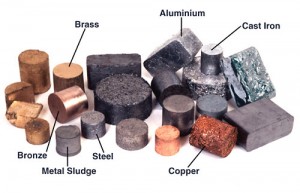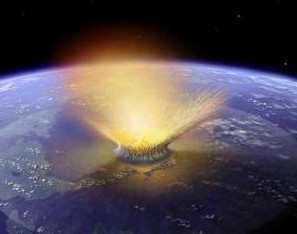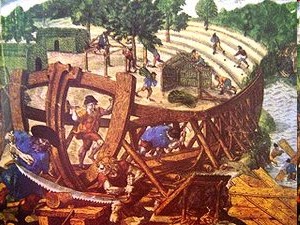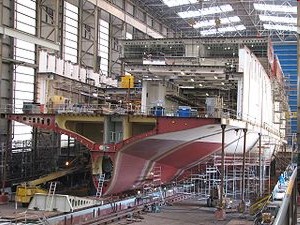In the last article, I talked about the basics of the transporter(MTAMS) and what they would do with it.
Here is some more of what they would do with such a system.
Imagine a world where you could make anything. Materialism wouldn’t be the same thing as in our world. Before you get outmoded ideas of socialist utopia, where there is no money, and all wants are fulfilled. That idea never worked, there is always a price, always.
In the case of MTAMS the price is energy, which would be the base of a means of exchange. What would stop everybody from making whatever they wanted(their own starship?). Quite frankly the waste of such a society would make what people complain about today, look like nothing. But one thing such a system can do is turn such waste into anything else.
So any matter can be manipulated into something else. Thus the ultimate form of recycling. Unlike in our world, where the only thing that is truly recyclable are metals.
Metals are infinitely recyclable, they can be melted down repeatedly. Where other materials such as plastics are very limited in their reuse. But under MTAMS it uses atoms, so as long as you have atoms and energy available the system will have something to convert.
Like I said energy is the cost of using the system. So a society would need to have a form of monetary exchange around the use of that energy. Or more simply put, you need to pay for the energy used to make what you wanted.
Of course you could create your own reactor. I’ll bet in the Star Trek world things would not be that simple. Creating such a system would be the easy part, running it is another matter entirely. The reason is simple, such a reactor would be so powerful it would make Sol look like an single LED(light emitting diode). Could you imagine millions of such reactors all over the planet. Such things would have to be regulated, since one mistake could mean a very bad day for everybody.
If a reactor goes critical an explosion will most likely not happen. If reactors have problems they don’t normally blow up. They melt down which is a whole lot worse, but that’s not as exciting as explosions.
One other thing to consider is how such a system would effect the value of everything. Take a rare piece of art, if you could recreate the artwork to the finest detail. Then what value would the original have?
None, unless measures were taken to protect the art. Even then who is to say someone wouldn’t switch out an original. Not tell anybody, so everyone assumes it’s the original piece. So you can see this would be a real problem. But the upshot is you can have any of the great works. Without the high price-tag.
There is a lot more to this, but I feel it’s best to keep this on topic.
Namely how would such a system be used to create another wonder of the Star Trek universe.
The Starship.
When spending a lot of hours working on this subject, I can’t help but think about how would they build a starship?
Sadly most people try to place these ships in the same context as we build ships today. That’s like asking someone from the 1600’s to conceive and build Concorde.
We really have no idea of how a ship capable of faster than light travel would operate. Someone from the 17th century wouldn’t have any concept of aerodynamics, jet engines, avionics(much less electronics), and the materials and methods to make the shape. It’s quite a list.
So all we can do is guess, and have fun with it. Which is why I’m writing this.
Starship design is more or less wide open(as long as you have at least two nacelles), but with the MTAM system. You can see what would work relatively quickly and be able to correct any issues. (Even in flight, I’ll get more into that later).
To use MTAMS to build a starship you need several things. First off space, raw material, and a lot of power. Nor can you forget the people involved, but that’s another story. I’m only going to focus on how they would manufacture a starship.
The first thing to consider is a location for the shipyard. Now using an MTAM system requires two things raw material and power. Both of these requirements would limit the locations of such a shipyard. The last place you would want such a shipyard is in orbit about an inhabited planet. Which goes against where Star Trek lore was placing them.
Why not in orbit about a inhabited planet(especially the seat of the Federation)?
Engineers are a very cautious lot. They don’t like things going wrong, but if they do best to minimize the damage to life, limb and property. Especially with the potentially large part designed for deep space travel, that would not break up in an atmosphere. It would leave a very large crater upon impact, or if it did break up, it would leave a lot of little craters. Either way the results are not desirable. In tribute to Murphy, “Whatever can go wrong, will.”
There is a second thing to consider, the reactors used to generate the MTAM process. Each reactor would be far more powerful than Earth’s sun. Like today’s nuclear reactors(at least in the US) , there would a number of safeguards to prevent catastrophe. Engineers being engineers would insist upon a more remote location, than the seat of the Federation.
The other thing is raw material. Raw material can get very expensive to move around. Especially when you need a lot of it, and a steady uninterrupted supply. If you had to move the material from one place to another, lets say to another world. That compounds a number of issues, as well as being unnecessary.
So we need a place that is secluded with a lot of raw material. But not too far away to make it prohibitive to travel there.
Is there such a place in our solar system?
Yes there is, at least two that come to mind. The first is the outer solar system beyond Pluto, there is a large amount material out there. But it isn’t as desirable, due to it’s distance from the inner solar system. Plus the amount of matter may not be as concentrated(we can only guess). The other is obvious, the asteroid belt between Jupiter and Mars. It meets all our criteria, and it’s only a few light minutes from Earth.
So what would these shipyards be like?
Not like anything we do today. There wouldn’t be any welders, plate metals or even large cranes. The shipbuilders of the future would look upon our methods of construction, as we would looking back at the construction of the sailing ships of the 18th century.
So if they are not carving or building sections and assembling them, just how would they do it?
The answer is obvious, but I will save that for the next post.

